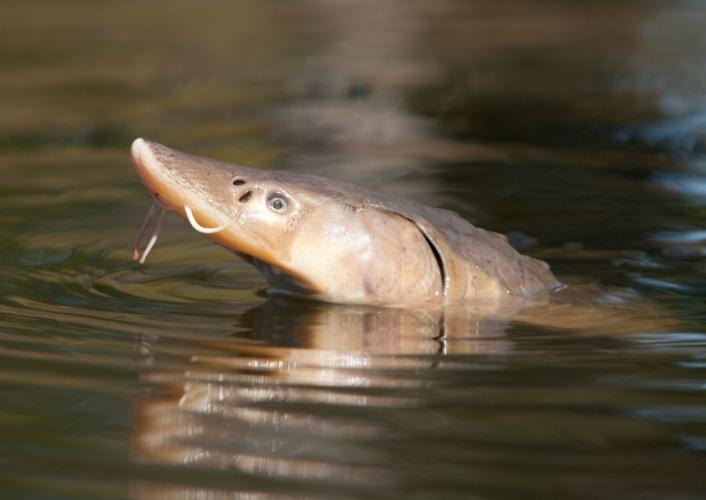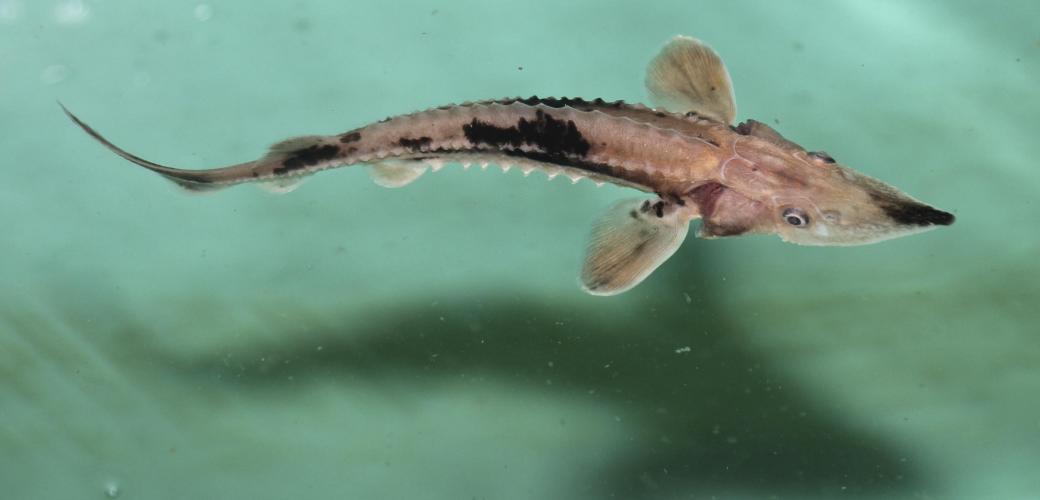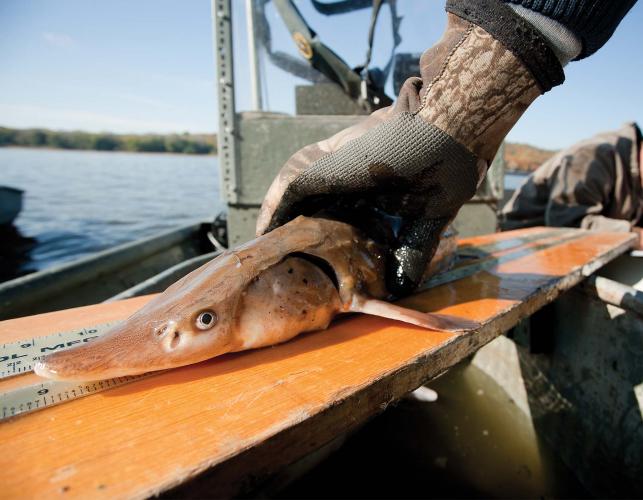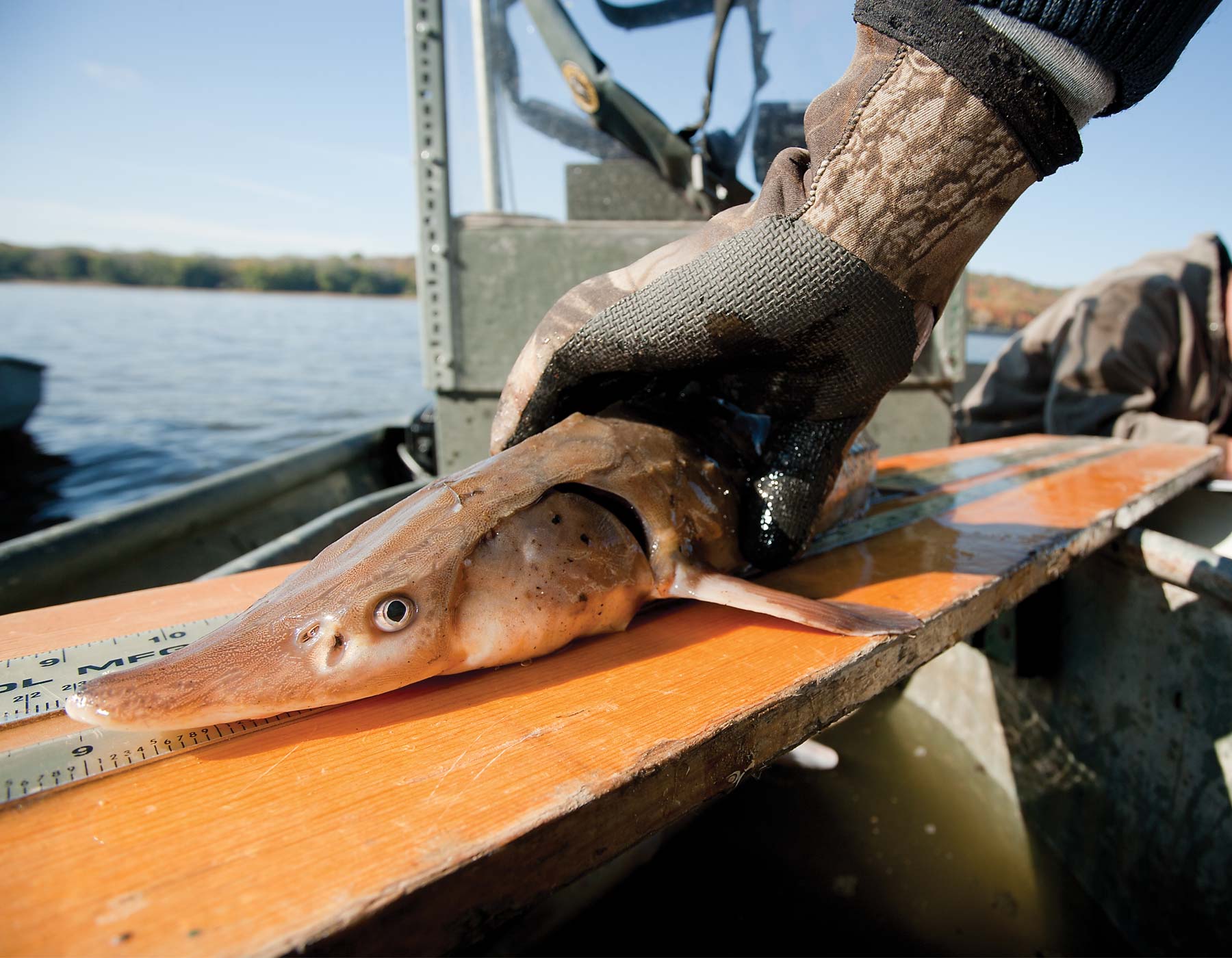
Xplor reconnects kids to nature and helps them find adventure in their own backyard. Free to residents of Missouri.


































Stay in Touch with MDC news, newsletters, events, and manage your subscription

Xplor reconnects kids to nature and helps them find adventure in their own backyard. Free to residents of Missouri.

A monthly publication about conservation in Missouri. Started in 1938, the printed magazine is free to residents of Missouri.






WEST ALTON, Mo. -- Three decades of lake sturgeon restoration efforts by the Missouri Department of Conservation (MDC) came to fruition recently when MDC Fisheries staff confirmed that the fish, nearly extinct within the state, are once again naturally reproducing in the Mississippi River near St. Louis.
This ancient species -- which has been around for more than 150 million years and has outlived the dinosaurs – was brought nearly to extinction within the past 50 years. They were once common in our big rivers, but overharvest and river habitat degradation caused their decline by the 1970s.
These river giants can reach lengths of eight feet, weigh as much as 300 pounds, and live for more than 100 years. The fish require up to 25-30 years to reach reproductive maturity and have a slow rate of reproduction, which make them even more vulnerable to population declines.
Decades ago, MDC Fisheries biologists took action to prevent lake sturgeon from disappearing in Missouri rivers. In 1974, The Conservation Department listed the species as a state endangered fish and banned their harvest. In 1984, MDC staff began to raise them in Department hatcheries and release fingerlings from eight to 10 inches into Missouri rivers. Restoration efforts were conducted in cooperation with the U.S. Fish and Wildlife Service.
For more than three decades, MDC Fisheries staff have looked for signs that the fish were on their way back through natural breeding in these rivers. They got those signs in mid-April through a video shot by Sam Hardy of St. Peters. While snagging for paddlefish near West Alton on the Mississippi River, Hardy saw what he thought were lake sturgeon spawning. He and girlfriend Kristin Biagioli, also of St. Peters, captured smartphone video of the behavior.
"I was excited because I'm an avid angler and outdoorsman and just to see something like that..." recalled Hardy, who had never seen a lake sturgeon in the wild. "I was just like a little kid. It blew my mind."
MDC Fisheries staff confirmed from the video that the fish were lake sturgeon and the behavior was consistent with spawning activity. MDC staff also examined the site where Hardy shot his video and discovered fertilized eggs. Staff collected 200 eggs to hatch in a lab and confirmed the species as lake sturgeon. They then returned to the site near West Alton and observed recently-hatched sturgeon in the river. This final piece of evidence confirmed lake sturgeon were once again reproducing naturally in the Mississippi River!
"Lake sturgeon typically spawn from April to May," explained MDC Fisheries Management Biologist Travis Moore, who leads MDC's Lake Sturgeon Recovery Team. "As spawning begins, several males join a single female near a rocky shoreline and begin thrashing in the water. This activity mixes the eggs from the female and milt from the males and the fertilized eggs then stick to rocks until they hatch within five or six days."
MDC Fisheries biologists began noticing other signs in mid-April suggestive of spring spawning. A small number of fish previously implanted with ultrasonic transmitters were tracked moving to locations favorable for spawning. One lake sturgeon was also captured on video in Dardenne Creek, a tributary to the Mississippi in St. Charles County. Biologists interpreted this movement as a search for spawning opportunity. Another angler-submitted video during this time also showed lake sturgeon spawning.
"We've been stocking lake sturgeon for 30 years, and our highest priority was to establish a self-sustaining population," said MDC River Systems Ecologist Quinton Phelps. "This confirmation is at least the beginning of a self-sustaining population."
Phelps added that he and other Fisheries experts view sturgeon reproduction in the wild as a landmark event, likening it to the historic success of bringing back deer and turkey to Missouri. "In the fish world, this is big, big news," he said.
To learn more about lake sturgeon, go online to mdc.mo.gov/node/1003, or youtube.com/watch?v=mDAQ2mQ467s.
Lake Sturgeon spawning is often described as "large brown fish, thrashing around on the rocks." Prior to spawning, males will gather near the spawning site and cruise near the surface of the water. Their dorsal fins and tops of their tails will stick prominently up out of the water.
The fish are highly mobile and can travel hundreds of miles to find the right spawning habitat. Spawning activity can occur on the Missouri River and its tributaries such as the Osage, Gasconade, Grand, and Lamine rivers. It can also occur on the Mississippi River and its tributaries such as the Fabius, Salt, Cuivre, and Meramec.
Immediately report possible lake sturgeon spawning activity to Fisheries Management Biologist Travis Moore at 573-248-2530 or travis.moore@mdc.mo.gov. Do not disturb the fish and only try to catch them with a camera.